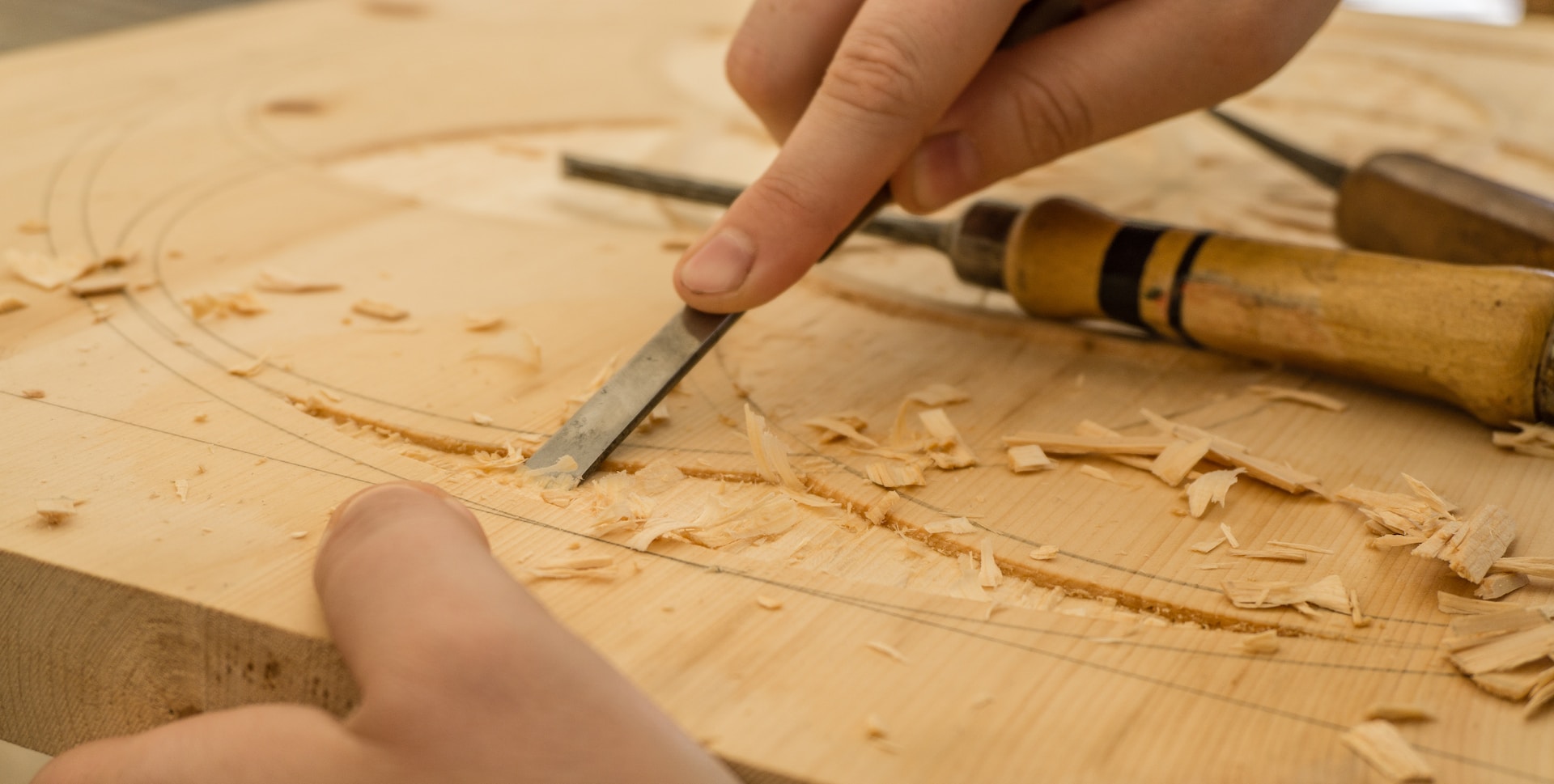Sustainable practices in the construction industry are becoming increasingly important as we strive to reduce our impact on the environment. Carpenters, as key players in the construction process, have a vital role to play in incorporating sustainable practices into their projects. By implementing sustainable strategies, carpenters can not only reduce the environmental impact of their work, but also improve the efficiency and cost-effectiveness of their projects.
In this article, we will explore some key strategies for incorporating sustainable practices in carpentry projects. We will examine the benefits of sustainable carpentry practices, as well as the challenges and opportunities that arise from implementing them. By following these strategies, you can contribute to a more sustainable future while also enhancing the quality and longevity of your work.
Use of Sustainable Materials
When it comes to sustainable carpentry, using eco-friendly materials is a crucial aspect. Sustainable materials refer to those that are responsibly sourced and produced, have a lower impact on the environment, and are often renewable or recyclable. By using sustainable materials, carpenters can significantly reduce the environmental impact of their projects while also creating healthier and safer living spaces.
There are various sustainable materials that carpenters can use, such as reclaimed wood, bamboo, cork, and recycled plastic. Reclaimed wood is a popular choice as it is salvaged from old buildings, bridges, or other structures and can add a unique character to a project. Bamboo is an excellent alternative to hardwood as it is a fast-growing and renewable resource that can be harvested without causing deforestation. Cork is another sustainable material that is harvested from the bark of cork oak trees without harming the tree, and it has excellent insulation and acoustic properties. Recycled plastic can be used in a variety of applications, including decking, fences, and furniture.
Using sustainable materials has many benefits, including reducing the carbon footprint of a project, improving indoor air quality, and promoting the use of responsible resources. Additionally, using sustainable materials can also save money in the long run, as they are often more durable and require less maintenance than traditional materials.
If you’re a carpenter looking to incorporate sustainable practices into your projects, start by researching and sourcing sustainable materials. Look for certifications such as Forest Stewardship Council (FSC) and Sustainable Forestry Initiative (SFI) to ensure that the materials are responsibly sourced. Additionally, consider ways to reduce waste by repurposing or recycling materials, and aim to design projects that maximize energy efficiency and minimize environmental impact. By incorporating sustainable materials and practices into your carpentry projects, you can create beautiful and functional spaces while also protecting the environment for future generations.
Importance of Energy Efficiency in Carpentry

Energy efficiency plays a vital role in sustainable carpentry, as it focuses on minimizing energy consumption and maximizing the performance of a building or project. By implementing energy-efficient practices, carpenters can significantly reduce their environmental impact and contribute to a more sustainable future.
Energy efficiency is essential in carpentry for several reasons. Firstly, it helps to conserve natural resources by reducing the demand for energy. As energy production often relies on fossil fuels, which contribute to greenhouse gas emissions and climate change, conserving energy directly mitigates these environmental impacts. Secondly, energy-efficient carpentry reduces the carbon footprint associated with a project, contributing to a more sustainable and eco-friendly construction industry. Lastly, implementing energy-efficient measures can lead to cost savings for both the carpenter and the client, as it lowers energy bills over the lifetime of a building or project.
6 Strategies for Improving Energy Efficiency in Carpentry Projects
There are various strategies that carpenters can employ to improve energy efficiency in their projects. Consider the following tips to make your carpentry endeavors more energy-efficient:
- Insulation: Proper insulation is crucial for maintaining thermal comfort and reducing energy loss. Ensure that walls, roofs, and floors are well-insulated to minimize heat transfer and prevent energy wastage.
- Efficient Windows and Doors: Opt for energy-efficient windows and doors that are well-sealed to minimize air leakage. Look for features such as double glazing, low-emissivity coatings, and weatherstripping to improve insulation and reduce heat gain or loss.
- Natural Lighting: Maximize the use of natural light by incorporating ample windows, skylights, or light tubes into your designs. This reduces the need for artificial lighting during the day, saving energy and creating a pleasant living or working environment.
- Lighting Fixtures: Choose energy-efficient lighting fixtures, such as LEDs, which consume less energy, have longer lifespans, and produce less heat compared to traditional incandescent bulbs. Properly design lighting layouts to optimize illumination and reduce unnecessary energy consumption.
- HVAC Systems: Select energy-efficient heating, ventilation, and air conditioning (HVAC) systems that are properly sized for the space. Ensure regular maintenance to keep them operating at peak efficiency and consider programmable thermostats to optimize energy usage.
- Renewable Energy Sources: Explore the integration of renewable energy sources into your projects. Solar panels, for example, can generate clean and sustainable electricity, reducing dependence on conventional power sources.
The Problem of Waste in Carpentry
Waste generation is a significant challenge in the carpentry industry, but it also presents an opportunity for carpenters to make a positive impact. Construction and carpentry projects often produce large amounts of waste, including excess materials, packaging, and offcuts. Improper waste management can lead to environmental pollution, resource depletion, and increased landfill usage. By addressing this problem through waste reduction strategies, carpenters can minimize their environmental footprint and promote a more sustainable approach to carpentry.
5 Strategies for Reducing Waste
Implementing waste reduction strategies is key to sustainable carpentry practices. Consider the following strategies to minimize waste in your carpentry projects:
- Material Planning and Optimization: Careful material planning and optimization can help reduce excess waste. Accurately calculate the required amount of materials and purchase only what is necessary. Optimize cutting and assembly techniques to maximize material utilization and minimize offcuts.
- Salvaging and Reusing: Salvage and repurpose materials whenever possible. Before discarding any materials, assess whether they can be reused in other projects or donated to organizations that can benefit from them.
- Recycling: Establish a recycling system on your construction site. Set up designated recycling bins for materials like wood, metal, plastic, and cardboard. Identify local recycling facilities and ensure proper disposal of recyclable materials.
- Composting: If you work with organic materials such as wood shavings or sawdust, consider composting them instead of throwing them away. Composting can turn these materials into nutrient-rich soil amendments, benefiting gardens and landscapes.
- Donation and Community Engagement: Partner with local organizations, schools, or charities to donate excess materials that are still in good condition. By doing so, you contribute to community development, reduce waste, and create positive relationships with those around you.
Reducing waste in carpentry projects brings several benefits. First and foremost, it conserves natural resources and reduces the environmental impact associated with raw material extraction and manufacturing processes. Waste reduction also minimizes the energy consumption and emissions associated with producing and transporting materials. Additionally, it lowers project costs by optimizing material usage, reducing purchasing needs, and minimizing disposal fees. Lastly, by actively managing waste, carpenters can enhance their reputation as environmentally conscious professionals and attract clients who value sustainable practices.
Promote Water Conservation and Efficiency

Water conservation is a critical aspect of sustainable carpentry, as water is a valuable and finite resource. It is crucial to use water efficiently and minimize waste throughout carpentry projects. By implementing water conservation strategies, carpenters can contribute to water sustainability efforts, reduce their environmental impact, and ensure responsible use of this precious resource.
5 Strategies for Conserving Water in Carpentry Projects
Carpenters can adopt various strategies to conserve water during their projects. Consider the following practices to promote water efficiency:
- Leak Detection and Repair: Regularly inspect plumbing fixtures, faucets, and pipes for leaks. Address any leaks promptly to prevent water waste.
- Efficient Plumbing Fixtures: Install water-efficient plumbing fixtures, such as low-flow toilets and faucets. These fixtures help minimize water usage without compromising functionality.
- Rainwater Harvesting: Consider incorporating rainwater harvesting systems into your projects. Collecting and storing rainwater for non-potable uses, such as irrigation, can significantly reduce the demand for freshwater.
- Water Recycling and Reuse: Explore opportunities to reuse water within your carpentry projects. For example, collect and reuse wastewater for site cleanup or dust suppression.
- Educational Campaigns: Educate workers and clients about the importance of water conservation and provide practical tips for responsible water use. Encourage everyone involved in the project to be mindful of their water consumption.
Final Thoughts
Incorporating sustainable practices in carpentry projects is not only crucial for the environment but also brings numerous benefits to carpenters and their clients.
By using sustainable materials such as reclaimed wood, bamboo, and recycled plastic, carpenters can reduce their environmental impact, conserve resources, and create unique and visually appealing projects. Implementing energy-efficient practices through insulation, efficient lighting, and HVAC systems not only reduces energy consumption but also improves comfort and lowers operating costs. Furthermore, waste reduction strategies, such as material optimization and recycling, help minimize landfill waste, conserve resources, and promote responsible resource management.
Carpenters who embrace sustainability can attract eco-conscious clients, expand their business opportunities, and enhance their professional reputation. Furthermore, implementing sustainable practices often leads to cost savings for both carpenters and clients, through reduced energy and water bills, optimized material usage, and minimized waste disposal costs.
As carpenters, it is our responsibility to prioritize sustainability in our projects. By adopting these strategies, we can contribute to a more sustainable future, create healthier and more efficient buildings, and preserve natural resources for generations to come.
If you’re starting a carpentry business, consider incorporating sustainable practices from the beginning. By establishing your business with a sustainability mindset, you can differentiate yourself in the market, attract environmentally conscious clients, and build a reputation for responsible and high-quality craftsmanship.
(Note: Is this article not meeting your expectations? Do you have knowledge or insights to share? Unlock new opportunities and expand your reach by joining our authors team. Click Registration to join us and share your expertise with our readers.)
